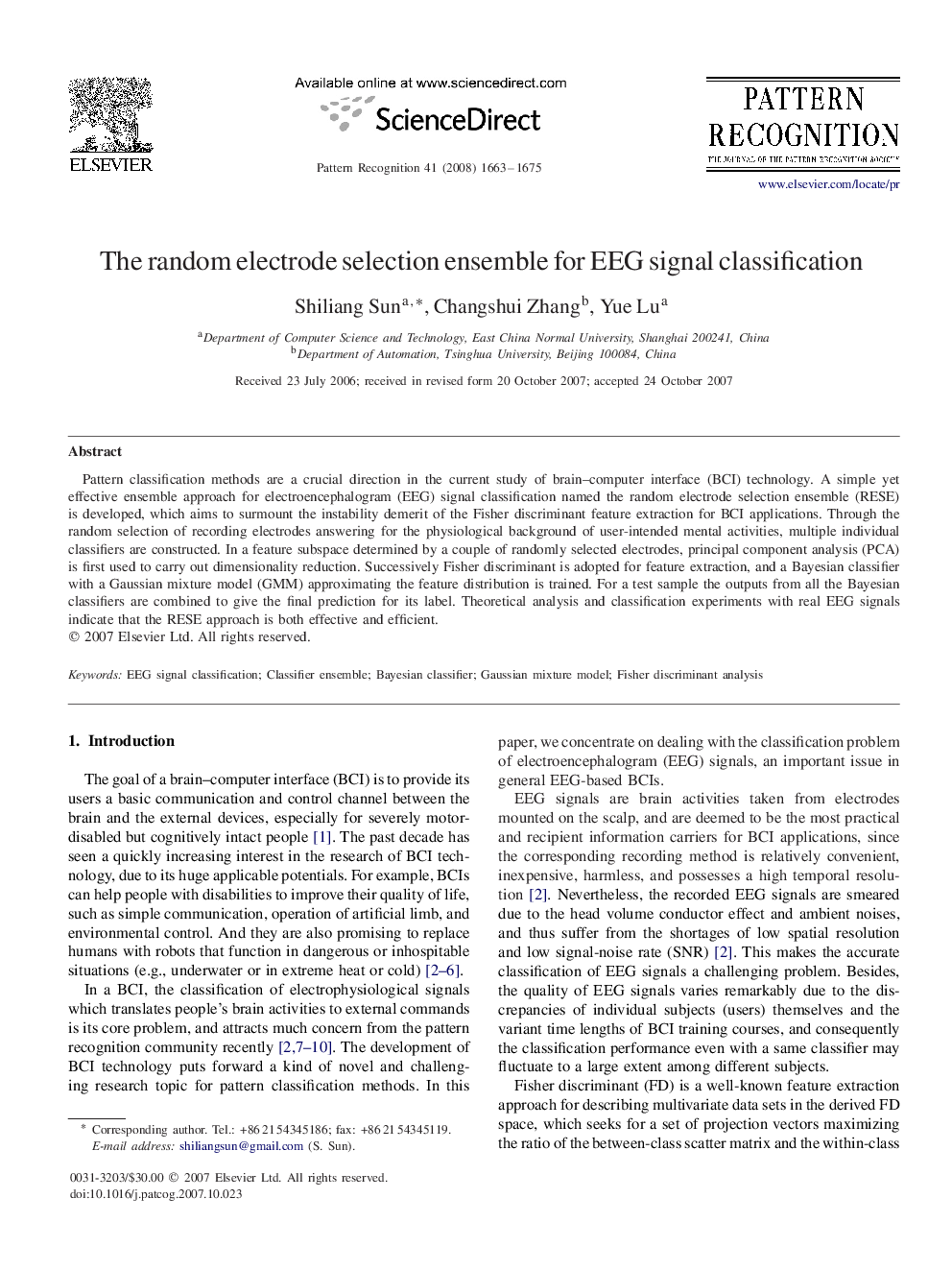| کد مقاله | کد نشریه | سال انتشار | مقاله انگلیسی | نسخه تمام متن |
|---|---|---|---|---|
| 533784 | 870166 | 2008 | 13 صفحه PDF | دانلود رایگان |

Pattern classification methods are a crucial direction in the current study of brain–computer interface (BCI) technology. A simple yet effective ensemble approach for electroencephalogram (EEG) signal classification named the random electrode selection ensemble (RESE) is developed, which aims to surmount the instability demerit of the Fisher discriminant feature extraction for BCI applications. Through the random selection of recording electrodes answering for the physiological background of user-intended mental activities, multiple individual classifiers are constructed. In a feature subspace determined by a couple of randomly selected electrodes, principal component analysis (PCA) is first used to carry out dimensionality reduction. Successively Fisher discriminant is adopted for feature extraction, and a Bayesian classifier with a Gaussian mixture model (GMM) approximating the feature distribution is trained. For a test sample the outputs from all the Bayesian classifiers are combined to give the final prediction for its label. Theoretical analysis and classification experiments with real EEG signals indicate that the RESE approach is both effective and efficient.
Journal: Pattern Recognition - Volume 41, Issue 5, May 2008, Pages 1663–1675